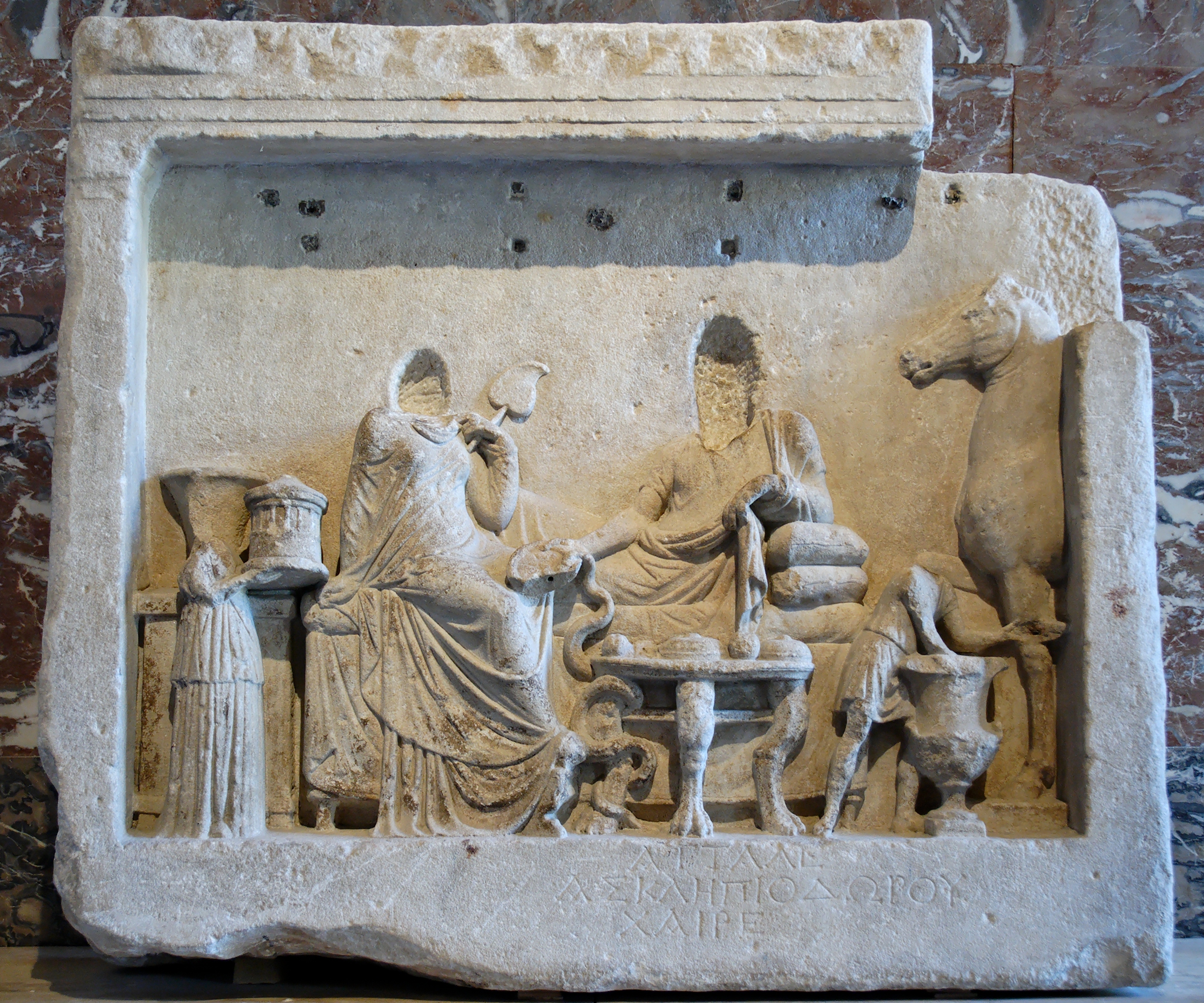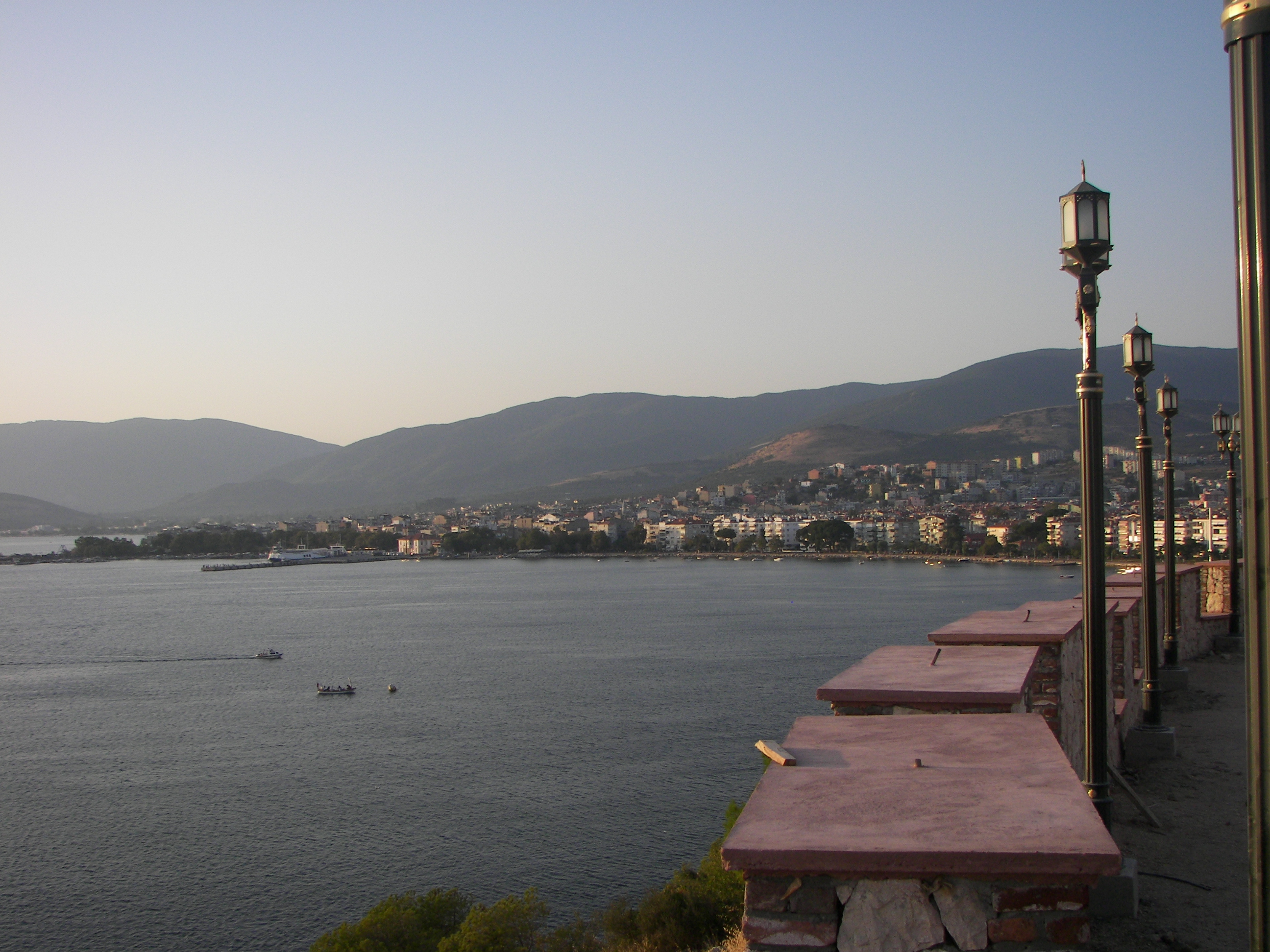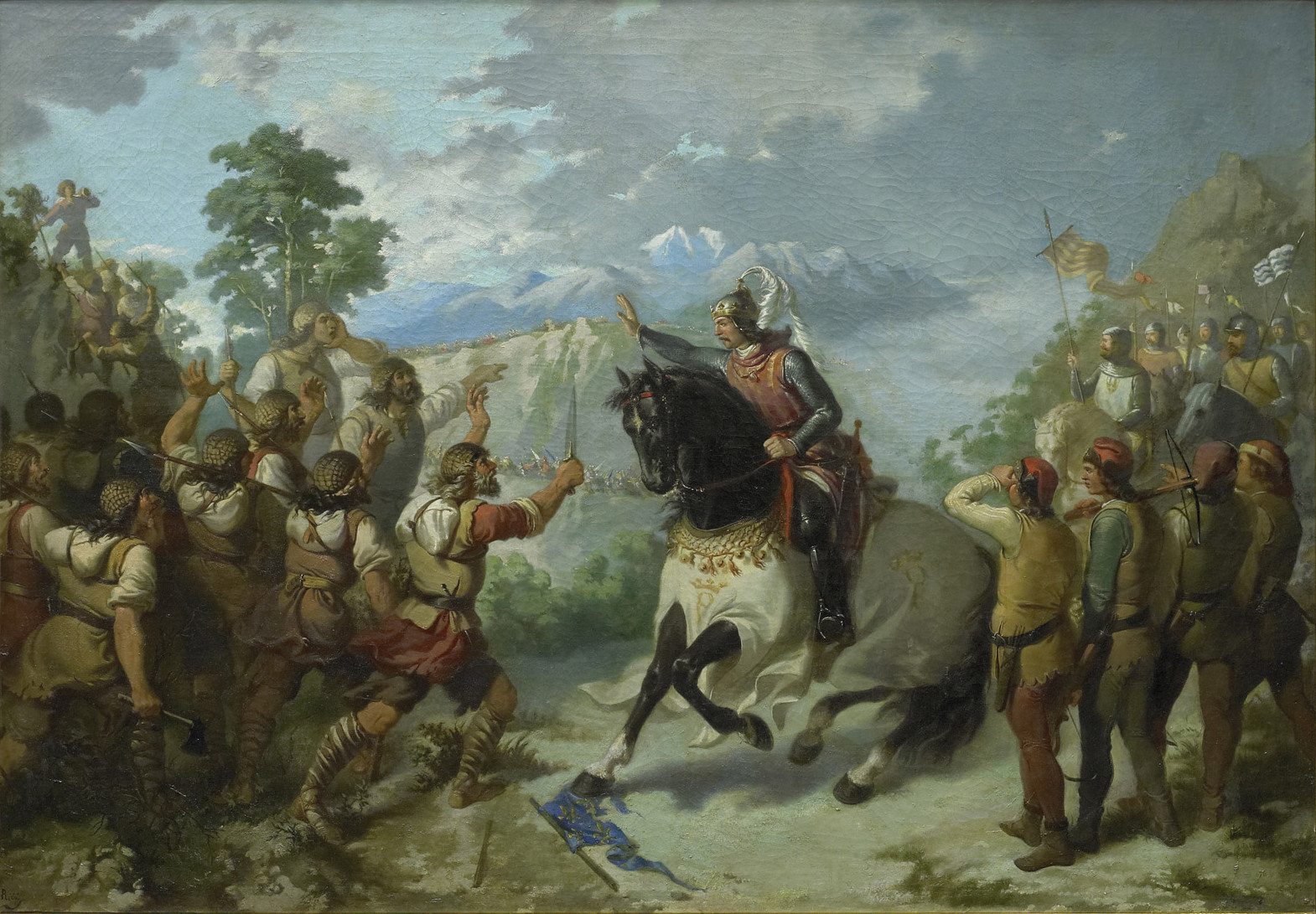|
Kapıdağ Peninsula
Kapıdağ Peninsula ( tr, Kapıdağ Yarımadası) ( gr, Χερσόνησος της Κυζίκου ) is a tombolo in northwestern Anatolia extending into the Sea of Marmara in Balıkesir Province, Turkey. The peninsula forms the Gulf of Bandırma on its east and the Gulf of Erdek on its west. Kapıdağ was the classical island of ancient Greek Arctonnesus, but was joined to the mainland by a narrow isthmus in historic times either by an earthquake or (according to legend) by Alexander the Great. It was also known as the Peninsula of Cyzicus after its chief town. Cyzicus was abandoned following a series of severe earthquakes, but served from 1303 to 1304 as the base of the Catalan Company of the East and was the site of the Battle of the Cyzicus in October 1303. After its conquest by the Ottoman Empire, it was part of the kaza of Erdek in the province of Bursa. Locations Erdek, a small town known as a seaside resort, is located in the Gulf of Erdek west of the peninsula. Er ... [...More Info...] [...Related Items...] OR: [Wikipedia] [Google] [Baidu] |
Marmara Sea
The Sea of Marmara,; grc, Προποντίς, Προποντίδα, Propontís, Propontída also known as the Marmara Sea, is an inland sea located entirely within the borders of Turkey. It connects the Black Sea to the Aegean Sea via the Bosporus and Dardanelles straits, separating the country's European and Asian sides. The Sea of Marmara is a small sea with an area of , and dimensions of . Its greatest depth is . Name The Sea of Marmara is named after the largest island to its south side which is called Marmara Island because it is rich in marble (Greek (''mármaron'') "marble)." In classical antiquity it was known as the Propontis, which is derived from the Greek words ''pro-'' (before) and ''pontos'' (sea) and reflects the fact that the Ancient Greeks used to sail through it to reach the Black Sea that they called Pontos. Mythology In Greek mythology, a storm on the Propontis brought the Argonauts back to an island they had left, precipitating a battle in which ei ... [...More Info...] [...Related Items...] OR: [Wikipedia] [Google] [Baidu] |
Cyzicus
Cyzicus (; grc, Κύζικος ''Kúzikos''; ota, آیدینجق, ''Aydıncıḳ'') was an ancient Greek town in Mysia in Anatolia in the current Balıkesir Province of Turkey. It was located on the shoreward side of the present Kapıdağ Peninsula (the classical Arctonnesus), a tombolo which is said to have originally been an island in the Sea of Marmara only to be connected to the mainland in historic times either by artificial means or an earthquake. The site of Cyzicus, located on the Erdek and Bandırma roads, is protected by Turkey's Ministry of Culture. History Ancient The city was said to have been founded by Pelasgians from Thessaly, according to tradition at the coming of the Argonauts; later it received many colonies from Miletus, allegedly in 756 BC, but its importance began near the end of the Peloponnesian War when the conflict centered on the sea routes connecting Greece to the Black Sea. At this time, the cities of Athens and Miletus diminished in impo ... [...More Info...] [...Related Items...] OR: [Wikipedia] [Google] [Baidu] |
Landforms Of Balıkesir Province
A landform is a natural or anthropogenic land feature on the solid surface of the Earth or other planetary body. Landforms together make up a given terrain, and their arrangement in the landscape is known as topography. Landforms include hills, mountains, canyons, and valleys, as well as shoreline features such as bays, peninsulas, and seas, including submerged features such as mid-ocean ridges, volcanoes, and the great ocean basins. Physical characteristics Landforms are categorized by characteristic physical attributes such as elevation, slope, orientation, stratification, rock exposure and soil type. Gross physical features or landforms include intuitive elements such as berms, mounds, hills, ridges, cliffs, valleys, rivers, peninsulas, volcanoes, and numerous other structural and size-scaled (e.g. ponds vs. lakes, hills vs. mountains) elements including various kinds of inland and oceanic waterbodies and sub-surface features. Mountains, hills, plateaux, and plains are the fou ... [...More Info...] [...Related Items...] OR: [Wikipedia] [Google] [Baidu] |
Peninsulas Of Turkey ...
Turkey is primarily a country of two peninsulas: the Asiatic (southeastern) side is Anatolia, and the European (northwestern) side is Thrace on the Balkan Peninsula. On these two main peninsulas there are secondary peninsulas.''Britannica Atlas'',Encyclopædia Britannica Inc.,1977,p 121-122 The list of peninsulas See also * Bays of Turkey * Capes of Turkey *Geography of Turkey References {{DEFAULTSORT:Peninsulas of Turkey Peninsulas * Turkey Turkey ( tr, Türkiye ), officially the Republic of Türkiye ( tr, Türkiye Cumhuriyeti, links=no ), is a transcontinental country located mainly on the Anatolian Peninsula in Western Asia, with a small portion on the Balkan Peninsula in ... [...More Info...] [...Related Items...] OR: [Wikipedia] [Google] [Baidu] |
Turkish Navy
The Turkish Naval Forces ( tr, ), or Turkish Navy ( tr, ) is the naval warfare service branch of the Turkish Armed Forces. The modern naval traditions and customs of the Turkish Navy can be traced back to 10 July 1920, when it was established as the ''Directorate of Naval Affairs'' during the Turkish War of Independence led by Mustafa Kemal Atatürk. Since July 1949, the service has been officially known as the ''Turkish Naval Forces''. In 2008, the Turkish Navy had a reported active personnel strength of 48,600; this figure included an Amphibious Marines Brigade as well as several Special Forces and Commando detachments. As of early 2021, the navy operates a wide variety of ships and 60 maritime aircraft. History Ottoman fleet after Mudros Following the demise of the Ottoman Empire in the aftermath of World War I, on November 3, 1918, the fleet commander of the Ottoman Navy, rear admiral Arif Pasha, ordered all flags to be struck on all warships lying in the Gol ... [...More Info...] [...Related Items...] OR: [Wikipedia] [Google] [Baidu] |
Erdek Naval Base
Erdek Naval Base ( tr, Erdek Deniz Üssü) is a base of the Turkish Navy on the south coast of the Sea of Marmara south-east of Erdek in Balıkesir Province. It is the principal base for mine warfare vessels. Operations * 1st Minehunter and Minesweeper Flotilla Commodore (1. Arama Tarama Filotillası Komodorluğu) * 2nd Minehunter and Minesweeper Flotilla Commodore (2. Arama Tarama Filotillası Komodorluğu) * Mine Warfare Support Center Command (Mayın Harbi Destek Merkezi Komutanlığı) Homeported vessels 1st Minehunter and Minesweeper Flotilla * ''A'' or ''Aydın'' class minehunters ** TCG ''Alanya'' (M 265) ** TCG ''Amasra'' (M 266) ** TCG ''Ayvalık'' (M 267) ** TCG ''Akçakoca'' (M 268) * ''S'' class minesweepers ** TCG ''Silifke'' (M 514) ** TCG ''Saros'' (M 515) ** TCG ''Sığacık'' (M 516) ** TCG ''Sapanca'' (M 517) ** TCG ''Sarıyer'' (M 518) 2nd Minehunter and Minesweeper Flotilla * ''E'' or ''Engin'' class minehunters ** TCG ''Edincik'' (M 260), ex HMS ''Gr ... [...More Info...] [...Related Items...] OR: [Wikipedia] [Google] [Baidu] |
Bursa Vilayet
( grc-gre, Προῦσα, Proûsa, Latin: Prusa, ota, بورسه, Arabic:بورصة) is a city in northwestern Turkey and the administrative center of Bursa Province. The fourth-most populous city in Turkey and second-most populous in the Marmara Region, Bursa is one of the industrial centers of the country. Most of Turkey's automotive production takes place in Bursa. As of 2019, the Metropolitan Province was home to 3,056,120 inhabitants, 2,161,990 of whom lived in the 3 city urban districts (Osmangazi, Yildirim and Nilufer) plus Gursu and Kestel, largely conurbated. Bursa was the first major and second overall capital of the Ottoman State between 1335 and 1363. The city was referred to as (, meaning "God's Gift" in Ottoman Turkish, a name of Persian origin) during the Ottoman period, while a more recent nickname is ("") in reference to the parks and gardens located across its urban fabric, as well as to the vast and richly varied forests of the surrounding region ... [...More Info...] [...Related Items...] OR: [Wikipedia] [Google] [Baidu] |
Kaza Of Erdek
Erdek (formerly known as ''Artàke'', el, Αρτάκη) is a town and district of Balıkesir Province in the Marmara region of Turkey. The population was 34,000 in 2010. Located on the Kapıdağ Peninsula, on the north coast of the Gulf of Erdek at the south of the Sea of Marmara, Erdek is a popular domestic holiday destination with several hotels dating back to the 1960s. The surrounding area has a rugged geology and topography with evergreen wooded areas and large olive groves. It is dominated by Mt Dindymus (782m). In the summer ferries travel from Erdek to Avşa Adası, one of the Marmara Islands in the Sea of Marmara. The harbour overlooks tiny Zeytinlik island where there is a research station devoted to olives. History During the Hittite era it was known as ''Artukka''. Later it became a colony of Miletus. Together with other Greek cities, it took part in the Ionian Revolt against the Persian Empire, but was burnt by the Persians; it seems unlikely that it was ... [...More Info...] [...Related Items...] OR: [Wikipedia] [Google] [Baidu] |
Ottoman Empire
The Ottoman Empire, * ; is an archaic version. The definite article forms and were synonymous * and el, Оθωμανική Αυτοκρατορία, Othōmanikē Avtokratoria, label=none * info page on book at Martin Luther University) // CITED: p. 36 (PDF p. 38/338) also known as the Turkish Empire, was an empire that controlled much of Southeast Europe, Western Asia, and Northern Africa between the 14th and early 20th centuries. It was founded at the end of the 13th century in northwestern Anatolia in the town of Söğüt (modern-day Bilecik Province) by the Turkoman tribal leader Osman I. After 1354, the Ottomans crossed into Europe and, with the conquest of the Balkans, the Ottoman beylik was transformed into a transcontinental empire. The Ottomans ended the Byzantine Empire with the conquest of Constantinople in 1453 by Mehmed the Conqueror. Under the reign of Suleiman the Magnificent, the Ottoman Empire marked the peak of its power and prosperity, as well a ... [...More Info...] [...Related Items...] OR: [Wikipedia] [Google] [Baidu] |
Battle Of The Cyzicus
The Battle of the Cyzicus ( ca, Batalla del riu Cízic) was fought in October 1303 between the Catalan Company of the East under Roger de Flor, acting as mercenaries on behalf of the Byzantine Empire, and the Ottoman Turks under Osman Gazi. It was the first of several engagements between the two sides during the Catalan Company's Anatolian Campaign against the Ottomans. The result was a crushing Catalan victory. The ''almogavars'' of the Catalan Company made a surprise attack on the Turkish camp located at Erdek Erdek (formerly known as ''Artàke'', el, Αρτάκη) is a town and district of Balıkesir Province in the Marmara region of Turkey. The population was 34,000 in 2010. Located on the Kapıdağ Peninsula, on the north coast of the Gulf of Erd ..., killing about 3000 cavalry and 10,000 infantry and capturing many women and children. Many of the Turkish women and children captured were sold into slavery. References Bibliography * History of Balıkesir Pr ... [...More Info...] [...Related Items...] OR: [Wikipedia] [Google] [Baidu] |
Catalan Company Of The East
The Catalan Company or the Great Catalan Company (Spanish: ''Compañía Catalana'', Catalan: ''Gran Companyia Catalana'', Latin: ''Exercitus francorum'', ''Societas exercitus catalanorum'', ''Societas cathalanorum'', ''Magna Societas Catalanorum'') was a company of mercenaries led by Roger de Flor in the early 14th century and hired by the Byzantine Emperor Andronikos II Palaiologos to combat the increasing power of the Anatolian beyliks. It was formed by '' almogavar'' veterans of the War of the Sicilian Vespers, who had remained unemployed after the signing in 1302 of the Peace of Caltabellotta between the Crown of Aragon and the French dynasty of the Angevins. Origin The military demands of the Reconquista stimulated the formation of the elite light infantry known as the ''almogavars'' on the Iberian peninsula during the 13th century. These troops were used quite effectively by the Crown of Aragon for other imperial ventures in the Mediterranean, particularly the War of t ... [...More Info...] [...Related Items...] OR: [Wikipedia] [Google] [Baidu] |
Alexander The Great
Alexander III of Macedon ( grc, wikt:Ἀλέξανδρος, Ἀλέξανδρος, Alexandros; 20/21 July 356 BC – 10/11 June 323 BC), commonly known as Alexander the Great, was a king of the Ancient Greece, ancient Greek kingdom of Macedonia (ancient kingdom), Macedon. He succeeded his father Philip II of Macedon, Philip II to the throne in 336 BC at the age of 20, and spent most of his ruling years conducting a lengthy military campaign throughout Western Asia and ancient Egypt, Egypt. By the age of thirty, he had created one of the List of largest empires, largest empires in history, stretching from Greece to northwestern Historical India, India. He was undefeated in battle and is widely considered to be one of history's greatest and most successful military commanders. Until the age of 16, Alexander was tutored by Aristotle. In 335 BC, shortly after his assumption of kingship over Macedon, he Alexander's Balkan campaign, campaigned in the Balkans and reasserted control ... [...More Info...] [...Related Items...] OR: [Wikipedia] [Google] [Baidu] |



.jpg)



